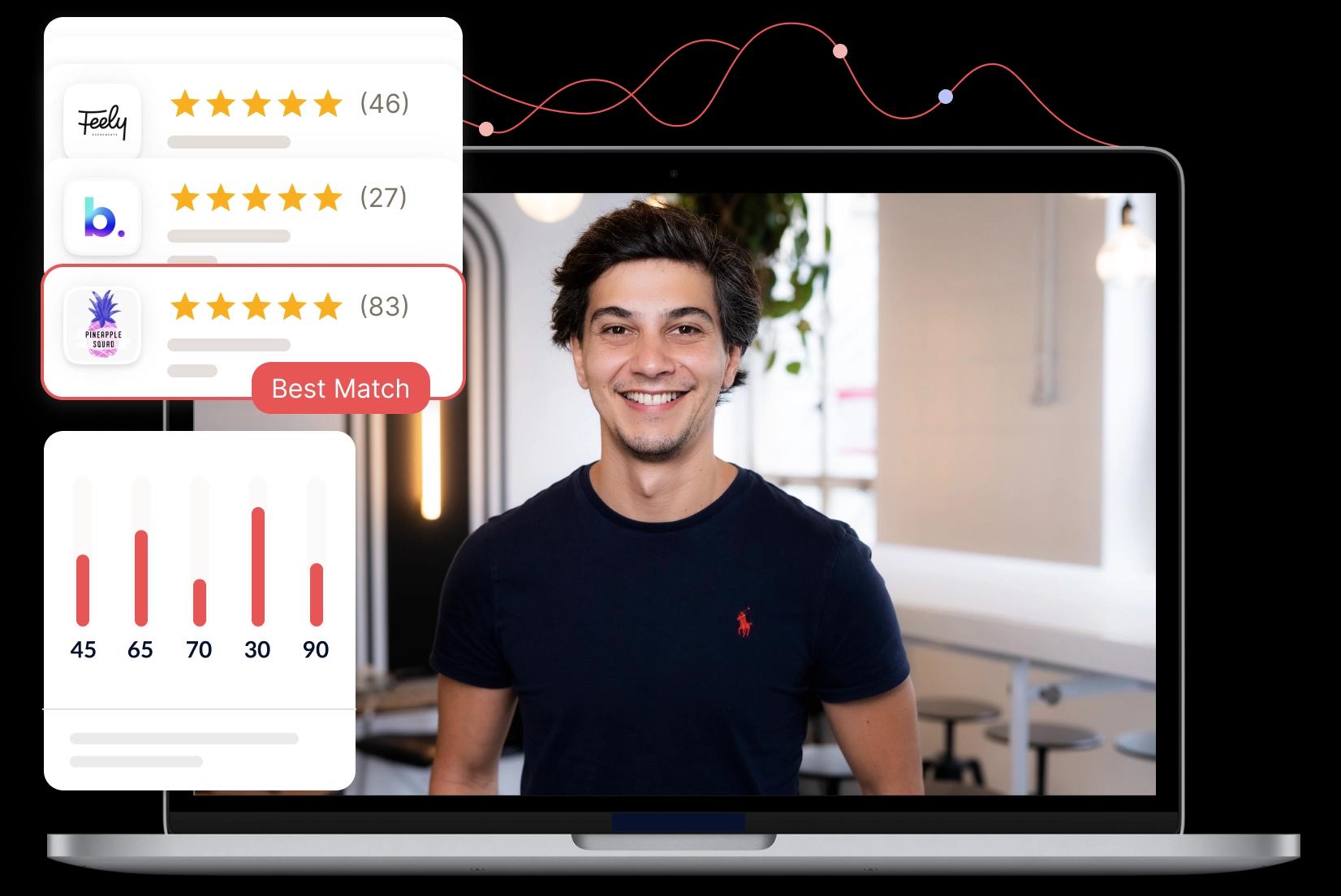WE ARE THINKERS AND MAKERS OF TODAY'S COMMUNICATION AND COMMERCE.
Best User Experiences Agencies
- 4.6(37 reviews)
Experience design agency specialized in Identity, Development, 3D technology and Ai Content creation
RecommendedAward-winner48 works in Ergonomy (UX/UI)Active in the Amsterdam, NetherlandsFrom €3000 for Ergonomy (UX/UI) - RecommendedAward-winner30 works in Ergonomy (UX/UI)Active in the Haz-Zebbug, MaltaFrom €1000 for Ergonomy (UX/UI)
- RecommendedAward-winner28 works in Ergonomy (UX/UI)Active in the Dubai, United Arab EmiratesFrom €1000 for Ergonomy (UX/UI)
- RecommendedAward-winner15 works in Ergonomy (UX/UI)Active in the Greater London, United KingdomFrom €10000 for Ergonomy (UX/UI)
- RecommendedAward-winner11 works in Ergonomy (UX/UI)Active in the Barcelona, SpainFrom €1000 for Ergonomy (UX/UI)
- RecommendedAward-winner4 works in Ergonomy (UX/UI)Active in the Greater London, United KingdomFrom €1000 for Ergonomy (UX/UI)
- RecommendedAward-winner23 works in Ergonomy (UX/UI)Active in the Cherkasy, UkraineFrom €10000 for Ergonomy (UX/UI)
- 4.8(15 reviews)
WE ARE THINKERS AND MAKERS OF TODAY'S COMMUNICATION AND COMMERCE.
RecommendedAward-winner27 works in Ergonomy (UX/UI)Active in the Hamburg, GermanyFrom €3000 for Ergonomy (UX/UI) - 4.9(13 reviews)
Full stack development | Mobile Apps | E-commerce | Web Development | UX/ UI Design
RecommendedAward-winner7 works in Ergonomy (UX/UI)Active in the Berlin, GermanyFrom €5000 for Ergonomy (UX/UI) - RecommendedAward-winner13 works in Ergonomy (UX/UI)Active in the Cluj-Napoca, RomaniaFrom €5000 for Ergonomy (UX/UI)
- RecommendedAward-winner9 works in Ergonomy (UX/UI)Active in the Scottsdale, United StatesFrom €1000 for Ergonomy (UX/UI)
- RecommendedAward-winner16 works in Ergonomy (UX/UI)Active in the Asnières-sur-Seine, FranceFrom €1000 for Ergonomy (UX/UI)
- 4.8(14 reviews)
A strategic branding & design agency, working for sustainable lifestyle and tech brands.
RecommendedAward-winner14 works in Ergonomy (UX/UI)Active in the Rotterdam, NetherlandsFrom €3000 for Ergonomy (UX/UI) - 4.8(11 reviews)
Nous développons vos idées innovantes et vous accompagnons dans une transition digitale.
RecommendedAward-winner16 works in Ergonomy (UX/UI)Active in the Brussels, BelgiumFrom €5000 for Ergonomy (UX/UI) - RecommendedAward-winner15 works in Ergonomy (UX/UI)Active in the Geneva, SwitzerlandFrom €1000 for Ergonomy (UX/UI)
- RecommendedAward-winner5 works in Ergonomy (UX/UI)Active in the Eccles, United KingdomFrom €1200 for Ergonomy (UX/UI)
- RecommendedAward-winner3 works in Ergonomy (UX/UI)Active in the Berlin, GermanyFrom €1000 for Ergonomy (UX/UI)
- RecommendedAward-winner12 works in Ergonomy (UX/UI)Active in the Ludwigsburg, GermanyFrom €4000 for Ergonomy (UX/UI)
- RecommendedAward-winner8 works in Ergonomy (UX/UI)Active in the Cologne, GermanyFrom €4500 for Ergonomy (UX/UI)
- RecommendedAward-winner1 work in Ergonomy (UX/UI)Active in the Hong Kong Island, Hong KongFrom €1000 for Ergonomy (UX/UI)
